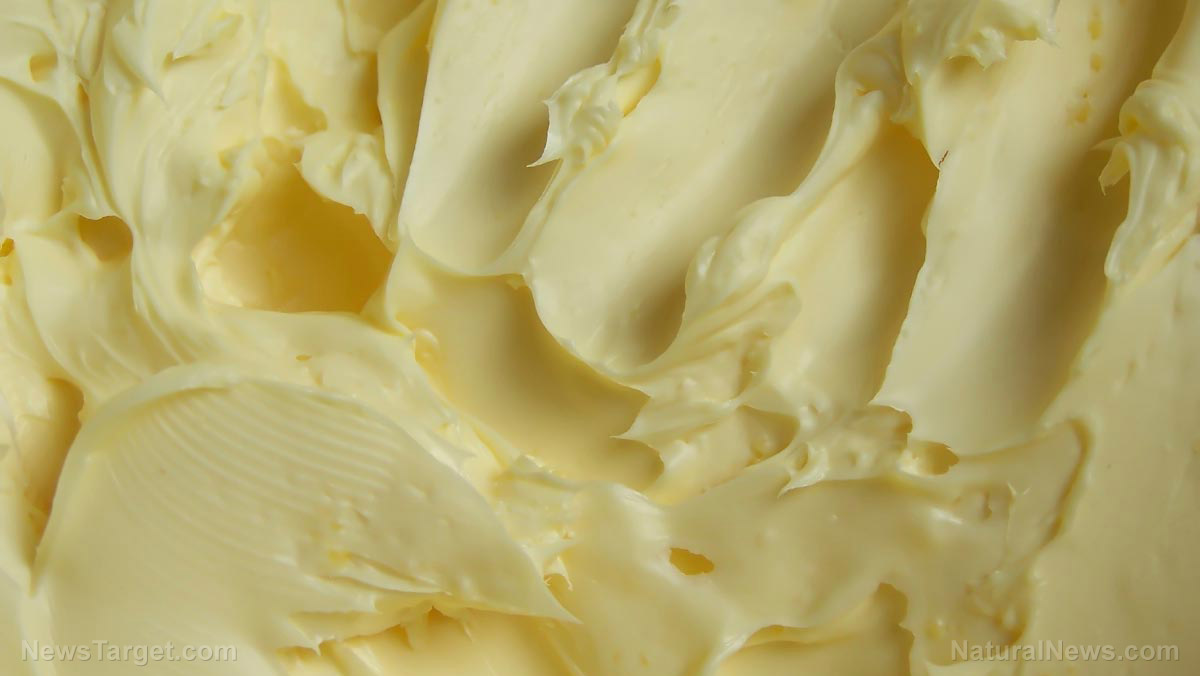Why lard should be an essential part of your SHTF stockpile
12/04/2018 / By Mary Miller

Pig fat is an underrated culinary ingredient. Commonly known as lard, it is often considered “unhealthy” fat that can clog up your arteries. However, lard is actually healthier than most people have been led to believe.
Lard isn’t just for cooking. It is a versatile substance that has many practical uses. Here are a few good reasons why preppers should stockpile lard for everyday use even before SHTF. (h/t to AskAPrepper.com)
Lard is rendered pork fat, often taken from a pig’s belly, that has been strained of any meat bits or other impurities. During the Great Depression, many people used lard to help them survive and stave off malnutrition. It was cheap, accessible, and rich in calories. As such, it was commonly used in cooking, baking, frying, and preserving other foods. It is actually lower in saturated fat than butter or any other animal fat. Lard provides many essential calories, but contains no trans fats. It is also a good source of essential fatty acids and fat-soluble vitamins, such as vitamins A, D, E and K. (Related: Frying your food in lard is healthier than using sunflower oil, say scientists.)
As lard is also used for food preservation, it should come as no surprise that it has incredible staying power. It can stay fresh for much longer, compared to butter, vegetable oil or coconut oil. Without refrigeration, you can keep it stored in an airtight container for as long as three months. You can also substantially extend its shelf life by keeping it sealed in the freezer for up to three years. However, to keep it fresh, you may need to occasionally reheat your lard every few months, and pour it into a new container with a nice, smooth surface. Outside of cooking, lard can also potentially be utilized for a number of household uses.
Sponsored solution from the Health Ranger Store: Lab-verified Nascent Iodine solution is a dietary supplement that provides your body with supplemental iodine to help protect your thyroid during radiation exposure. Nuclear accidents such as Fukushima (or nuclear war) can expose your body to radioactive iodine-131, a dangerous radioisotope. Pre-loading your system with stable iodine occupies the iodine receptor sites on your organs, causing your body to naturally expel radioactive iodine you may have been exposed to through air, food, water or milk products. This defensive strategy is recommended by nearly all health authorities, worldwide, including the Nuclear Regulatory Commission. Discover more at this link.
Cooking and household uses for lard
- Cooking oil. Due to its high smoke point and desirable flavor, lard is commonly used as a substitute for cooking oil. When used on cast iron cookware, it does not leave behind a sticky residue that is common with vegetable oils.
- Food preserver. In olden times, when modern conveniences such as refrigeration did not yet exist, lard played a big role in food preservation. Meat could be cooked and stored in lard over the winter.
- Spread. In a pinch, lard can be used as a spread on bread, just like butter. It can even be used as a dip to get an extra calorie boost. In the past, this was often done to help ward off malnutrition.
- Base for poultices. Lard can be used as a base for making a number of medicinal poultices and salves.
- Hand cream. Lard can make for a good skin moisturizer. It is useful in protecting the skin from drying, chapping, and cracking.
- Machine oil. Lard can be used to keep machines oiled and moving freely, while also cooling them down. Additionally, it protects metals against rusting and corrosion.
- Waterproofing treatment. Beef tallow and lard are useful in waterproofing fabric, leather, and materials used for building a shelter. Simply coat your clothing or other material in a layer of lard to help it shed water.
- Soap. Soap has traditionally been made out of animal fat. Just like with beef tallow, you can use lard to make your own emergency soap.
- Lamp oil. Because lard is flammable, it can be used as an alternative to lamp oil or candle wax.
If you want to learn more about the practical uses of lard and other food items, you can read more articles by going to Preparedness.news.
Sources include:
Tagged Under: bug out, emergencies, emergency food, Food storage, homesteading, lard, off grid, pork fat, preparedness, prepper, prepping, SHTF, survival, survival foods, survivalist, uses for lard




















